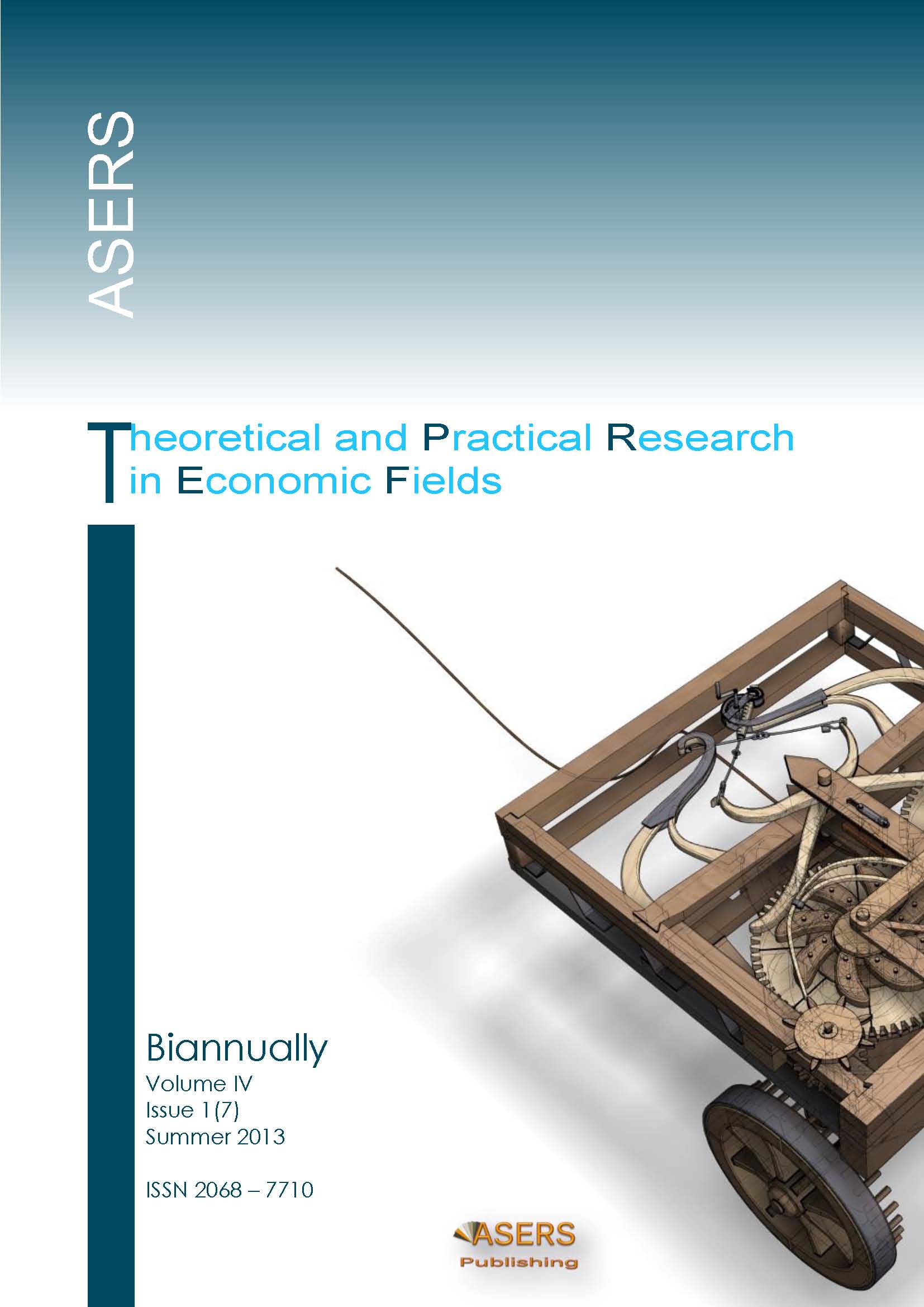MONEY FLEXIBILITY AND OPTIMAL CONSUMPTION-LEISURE CHOICE UNDER PRICE DISPERSION
Abstract
The synthesis of G.Sigler’s rule of the optimal search with the classical individual labor supply model can incorporate the satisficing decision procedure in the neoclassical framework. Many psychological anomalies and puzzles like the paradox of little pre-purchase search for big-ticket items and the effect of sunk costs sensitivity get the purely economic rationale. This synthesis also enlarges the understanding of the phenomenon of money flexibility under price dispersion. The specific constraints of the search model establish the correspondence between elasticity of the marginal utility of labor income with regard to price dispersion, wage rates, and the propensity to search. The money flexibility under price dispersion discovers specific features of Veblen effect. The marginal utility of labor income becomes negative, when the smart shopping of luxuries results in price reductions, which are greater than the wage rate. The marginal utility of luxuries also becomes negative. And the total consumption-leisure utility is increasing only due to the increase in leisure time. The paper argues that the same mechanism underlies the phenomenon of money illusion due to the relatively excess money balances.
References
[2] Baxley, J.V., Moorhouse, J.C. 1984. Lagrange Multiplier Problems in Economics. American Mathematical Monthly, 91(7): 404–412.
[3] Blaug, M. 1997. Economic Theory in Retrospect. 5th Edition, Cambridge University Press.
[4] Diamond, P. 1971. A Model of Price Adjustment. Journal of Economic Theory, 3: 156-168.
[5] Diamond, P. 1987. Consumer Differences and Prices in a Search Model. Quarterly Journal of Economics, 102: 429-436.
[6] Fellner, W. 1956. Patinkin’s Integration of Monetary and Value Theory. American Economic Review, 46(5): 947-955.
[7] Friedman, M. 1969. The Optimum Quantity of Money. in the Optimum Quantity of Money and Other Assets. Chicago Aldine Publishing Co., 1-50.
[8] Frisch, R. 1959. A Complete Scheme for Computing All Direct and Cross Demand Elasticities in a Model with Many Sectors. Econometrica, 27(2): 177-196.
[9] Leibenstein, H. 1950. Bandwagon, Snob, and Veblen Effects in the theory of consumers' demand. Quarterly Journal of Economics, 64: 183-207.
[10] Malakhov, S. 2011. Optimal Consumer Choices under Conditions of Sequential Search' Economic Policy. ANE-IEP, Moscow, 6(6): 148 - 168. (The English version is availaible as “Optimal Sequential Search and Optimal Consumption-Leisure Choice” at: http://works.bepress.com/sergey_malakhov.
[11] Malakhov, S. 2012a. A Paradox of Little Pre-Purchase Search for Durables: the trade-off between prices, product lifecycle, and savings on purchases. Available at: http://works.bepress.com/sergey_malakhov.
[12] Malakhov, S. 2012b. Satisficing Decision Procedure and Optimal Consumption-Leisure Choice. Available at: http://works.bepress.com/sergey_malakhov.
[13] Malakhov, S. 2012c. Veblen effect, Search for Status Goods, and Negative Utility of Conspicuous Leisure. Journal of Institutional Studies, 4(3):6-21 (The English version is availaible at: http://works.bepress.com/sergey_malakhov.
[14] Moav, O., Neeman, Z. 2012. Savings Rates and Poverty: The Role of Conspicuous Consumption and Human Capital. The Economic Journal, 122 (563): 933-956.
[15] Stigler, G. 1961. The Economics of Information. Journal of Political Economy, 69(3): 213-225.
[16] Stiglitz, J.E.1979. Equilibrium in Product Markets with Imperfect Information. American Economic Review, 69(2): 339-345.
[17] Walsh, C.E. 2003. Monetary Theory and Policy. Cambridge, Mass.: MIT Press.
Non-Exclusive License under Attribution 4.0 International Public License (CC BY 4.0):
This ‘Article’ is distributed under the terms of the license CC-BY 4.0., which lets others distribute, remix, adapt, and build upon this article, even commercially, as long as they credit this article for the original creation. ASERS Publishing will be acknowledged as the first publisher of the Article and a link to the appropriate bibliographic citation (authors, article title, volume issue, page numbers, DOI, and the link to the Published Article on ASERS Publishing’ Platform) must be maintained.
